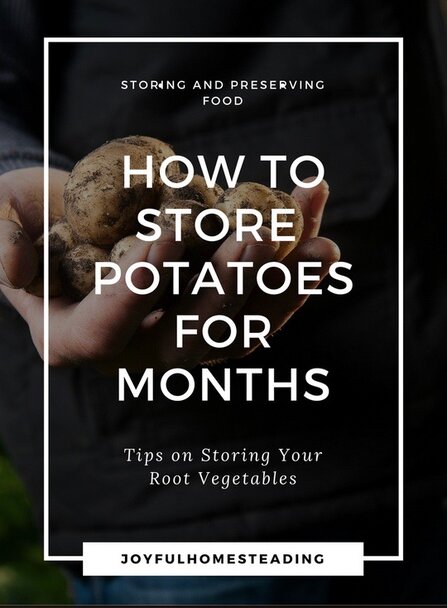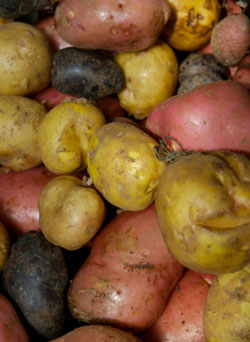Storing Root Vegetables
Storing root vegetables such as potatoes, carrots and beets, will help you keep your hard-earned garden produce fresh for months. It's also a great way to take advantage of any organic produce you find on sale or you pick at a local orchard. Using proper techniques you can store these foods for up to eight months, depending on the vegetable.

Storing Root Vegetables
The trick is providing your foods with the right temperature and humidity. You don't want your vegetables to freeze, but you don't want them to get warm enough to sprout either.
Provide a place that is kept between 32 and 40 degrees Fahrenheit and with sufficient humidity (about 95 percent) and you can store root vegetables for months, depending on the vegetable.
Carrots will can last up to six months if properly stored, and potatoes can last up to eight months.
If you're fortunate enough to have a root cellar, you can store vegetables by placing them in a crate or cardboard box with plenty of ventilation and then covering them loosely with either sand or peat moss to help regulate moisture.

Potatoes can last up to eight months if stored properly.
But let's face it: root cellars take a lot of time and effort to build. We're in the process of finishing ours which is also doubling as a storm shelter, but it took years to get to this stage.
If you live in the North and you don't have a root cellar, you can store your root vegetables in the basement, the crawl space of your house or a mud room - any place that stays cool. Again store them in a crate or cardboard box containing either sand or peat moss.
In places with mild winters and no hard frosts, a simple, low-cost method of storing root vegetables is clamping.
Storing Root Vegetables
and Clamping
Clamping stored vegetables is a method where you store your vegetables above ground, then cover them with several inches of organic matter and earth. Storing root vegetables this way provides good insulation and keeps your vegetables safe, cool and dry for months.
How to Build a Vegetable Clamp
After harvesting your vegetables at their peak, allow them to dry on the surface of the ground for a couple of hours. Then you'll need to find a patch of ground that is dry and not likely to become waterlogged in a hard rain.
Pile about six inches of straw on the ground. Then pile your vegetables on top of this in the shape of a pyramid.
By the way, it's much better to build several small clamps rather than one large one. That way, when you want to take vegetables out of the clamp you won't have to completely rebuild it - a bit of a pain in the wintertime.
Allow Your Clamps to Sweat
Once you have your vegetables piled up in a pyramid - or several pyramids - cover them with about six inches of straw. Then allow your vegetables to sit like that for a couple of days. That allows excess moisture to evaporate out of the clamp, a process is known as sweating.
Cover Your Clamps with Earth
Next you will need to cover your clamps with about six inches of dirt. The soil you use will need to be fairly dry, and you will also need to provide ventilation for your vegetables by allowing pieces of straw to poke through the top and along the bottom of your pyramid. Using a spade, pat the soil to make your pyramid smooth and steep-sided so that the rain will run off easily.
If you plan on storing root vegetables in large amounts you might also consider making clamps that are long and narrow. That way you can take out vegetables from one end without disturbing the remaining vegetables and then recovering the end.
Learn More About Going Off the Grid










New! Comments
Have your say about what you just read! Leave me a comment in the box below.